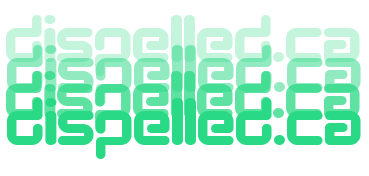Beginner's Guide to Python Programming
Python is a versatile and beginner-friendly programming language that is widely used in web development, data science, automation, and more. This tutorial introduces the basics of Python programming, covering key concepts such as variables, data types, conditionals, loops, and functions.
1. Introduction to Python
Python is known for its simplicity and readability, making it an excellent choice for beginners. Let’s start with a simple program:
# Print a welcome message
print("Welcome to Python Programming!")
Output:
Welcome to Python Programming!
2. Variables and Data Types
In Python, variables are used to store data. Python supports various data types, including strings, integers, floats, and booleans.
# Variables and their data types
name = "Alice" # String
age = 25 # Integer
height = 5.6 # Float
is_student = True # Boolean
print(f"Name: {name}, Age: {age}, Height: {height}, Is Student: {is_student}")
Output:
Name: Alice, Age: 25, Height: 5.6, Is Student: True
3. Basic Input and Output
Python makes it easy to interact with users through input and output:
# Input and output example
user_name = input("What is your name? ")
print(f"Hello, {user_name}! Welcome to Python.")
Example interaction:
What is your name? Alice
Hello, Alice! Welcome to Python.
4. Conditionals
Conditionals allow you to make decisions in your code using `if`, `elif`, and `else` statements:
# Conditional example
number = int(input("Enter a number: "))
if number > 0:
print("The number is positive.")
elif number < 0:
print("The number is negative.")
else:
print("The number is zero.")
Example interaction:
Enter a number: 5
The number is positive.
5. Loops
Loops allow you to repeat a block of code multiple times. Python supports `for` and `while` loops:
# For loop example
for i in range(1, 6):
print(f"Number: {i}")
# While loop example
count = 1
while count <= 5:
print(f"Count: {count}")
count += 1
Output:
Number: 1
Number: 2
Number: 3
Number: 4
Number: 5
Count: 1
Count: 2
Count: 3
Count: 4
Count: 5
6. Functions
Functions are reusable blocks of code that perform specific tasks:
# Function example
def greet(name):
return f"Hello, {name}!"
print(greet("Alice"))
print(greet("Bob"))
Output:
Hello, Alice!
Hello, Bob!
7. Lists
Lists are used to store multiple items in a single variable:
# List example
fruits = ["apple", "banana", "cherry"]
print("Fruits:", fruits)
fruits.append("orange")
print("After adding orange:", fruits)
Output:
Fruits: ['apple', 'banana', 'cherry']
After adding orange: ['apple', 'banana', 'cherry', 'orange']
8. Dictionaries
Dictionaries store data in key-value pairs:
# Dictionary example
person = {"name": "Alice", "age": 25, "city": "New York"}
print("Person:", person)
print("Name:", person["name"])
Output:
Person: {'name': 'Alice', 'age': 25, 'city': 'New York'}
Name: Alice
9. File Handling
Python makes it easy to work with files:
# Writing to a file
with open("example.txt", "w") as file:
file.write("Hello, this is a file created by Python!")
# Reading from a file
with open("example.txt", "r") as file:
content = file.read()
print("File Content:", content)
Output:
File Content: Hello, this is a file created by Python!
10. Conclusion
Congratulations! You’ve completed the beginner’s guide to Python programming. You’ve learned about variables, conditionals, loops, functions, and more. Python is a powerful language, and this is just the beginning of your journey.
How to Run This Tutorial
Follow these steps to run the code examples in this tutorial:
- Save the code snippets into a file named
beginner_python_tutorial.py. - Open a terminal or command prompt.
- Navigate to the directory where the file is saved using the
cdcommand. For example: - Run the script using Python 3:
- Follow the prompts and observe the output in your terminal.
cd /path/to/your/file
python3 beginner_python_tutorial.py
Check out some Bands on Bandcamp.com. Seven Times Refined by Altogether Steve and the Mercenaries, Crazy Fingers (Vancouver 1991), Flying Butt Pliers, and Hammy Ham Hands.
Proudly powered by a Text Editor, an IDE, an SFTP client, some Internet searches, and more recently help from some AI.
2025 dispelled.ca end of file.
